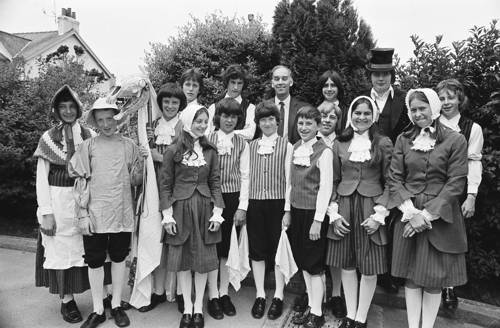
FAQ About The Role of Global Dance Competitions in Cultural Exchange

What is the significance of global dance competitions in cultural exchange?
Global dance competitions play a crucial role in cultural exchange by providing a platform for dancers from diverse cultural backgrounds to showcase their traditional and contemporary styles. These events encourage interaction and dialogue among participants and audiences, fostering a deeper understanding and appreciation of different cultures. The competitions often include workshops, discussions, and informal gatherings that facilitate sharing of cultural insights and artistic techniques.

How do international dance contests help in preserving dance traditions?
International dance contests help preserve dance traditions by offering a stage where traditional dancers can perform and demonstrate their art to a global audience. This exposure not only allows for cultural recognition but also motivates practitioners to keep their art alive. Preservation often goes hand-in-hand with documentation, and these performances are frequently recorded and disseminated for educational purposes, ensuring that the dance traditions are not forgotten.

In what ways do global dance competitions inspire new dance styles?
Global dance competitions inspire new dance styles by facilitating the fusion of different dance forms. Dancers often draw inspiration from the diverse techniques and styles they observe at these events, leading to creative combinations that evolve into new genres. The collaborative environment encourages innovation, allowing dancers to experiment and blend elements from various traditions to create unique choreographies.

Who can participate in international dance competitions?
Participation in international dance competitions is typically open to dancers of all levels, from amateurs to professionals, depending on the event. Some competitions are geared towards specific age groups, while others might focus on particular dance styles. Entry requirements vary, but generally, dancers must apply or qualify through regional competitions to participate in global contests.

What impact do dance competitions have on local cultures?
Dance competitions can have significant positive impacts on local cultures by promoting cultural pride and providing a platform for local artists to gain international exposure. They often attract tourism, boost local economies, and encourage the preservation and development of local dance forms. Moreover, they stimulate cultural dialogue and can help combat cultural stereotypes by showcasing authentic cultural expressions.

How are global dance competitions organized?
Global dance competitions are organized through a collaborative effort involving event organizers, judges, sponsors, and participants. Organizers are responsible for setting the rules and categories of competition, as well as arranging venues, logistics, and promotional activities. Judging panels are typically composed of experts in various dance genres to ensure fair assessment. Event success relies on thorough planning and effective management.

What role do dance competitions play in promoting diversity?
Dance competitions play a vital role in promoting diversity by highlighting a wide array of dance forms from different cultural backgrounds. This celebration of diversity helps to break down cultural barriers and encourages audiences to appreciate and respect the richness of traditions around the world. By doing so, they contribute to a more inclusive global society where cultural differences are celebrated rather than suppressed.

Are there global dance competitions focused solely on traditional dances?
Yes, there are global dance competitions dedicated exclusively to traditional dances. These events emphasize the performance and preservation of cultural heritage through dance. Competitions such as the "World Folklore Festival" focus on traditional dance forms and aim to promote cultural understanding and appreciation on an international scale.

Can dance competitions influence global dance trends?
Dance competitions can significantly influence global dance trends by introducing new styles and drawing attention to emerging talents. As dancers and choreographers innovate and showcase their creations on international platforms, audiences worldwide become exposed to new movements and aesthetics, which can lead to shifts in what is popular or trendy in the global dance community.

What types of dance are typically featured in international competitions?
International dance competitions typically feature a broad range of dance styles, including but not limited to ballet, hip-hop, contemporary, jazz, ballroom, folk, and traditional cultural dances. The diversity in the lineup allows participants and audiences to experience a wide spectrum of artistic expression, contributing to a culturally enriching event.

How do audiences benefit from attending global dance competitions?
Audiences benefit from attending global dance competitions by gaining exposure to a rich tapestry of dance styles and cultures. Beyond entertainment, these events offer educational value, providing viewers with insights into the history and significance of various dances. Attending such competitions helps to increase cultural literacy and fosters a deeper appreciation for global artistic expressions.

Do global dance competitions have educational components?
Many global dance competitions offer educational components such as workshops, masterclasses, and panel discussions. These sessions are often conducted by renowned dancers and choreographers, providing participants and audiences a chance to learn about different dance techniques, styles, and the cultural context behind them. Educational elements enrich participants' experience and provide deeper insights into the art form.

What challenges do international dance competitions face?
International dance competitions face several challenges, including logistical complexity, ensuring fair judging, and accommodating diverse cultural practices. Organizers must manage communications across different languages and time zones, secure funding and sponsorship, and address any cultural sensitivities to avoid misunderstandings. Additionally, maintaining the integrity of traditional dances while allowing for innovation requires careful balance.

How are winners typically selected in global dance competitions?
Winners in global dance competitions are typically selected by a panel of judges who assess performances based on criteria such as technical skill, artistic interpretation, originality, and overall presentation. The judging process often follows specific guidelines to ensure fairness and consistency. In some cases, audience voting may also play a role in determining winners.

What role do sponsors play in international dance competitions?
Sponsors play a crucial role in international dance competitions by providing the financial support needed for the events to take place. Sponsorships can cover costs such as venue rental, prizes, marketing, and travel expenses for international participants. Sponsors often benefit from increased visibility and association with cultural initiatives, which can enhance their brand image.

Can dance competitions contribute to cross-cultural collaboration?
Dance competitions contribute to cross-cultural collaboration by bringing together dancers and choreographers from different backgrounds to share their art. This interaction often leads to collaborations in creating new works, exchanging techniques, and exploring different dance philosophies. Such collaborations can transcend cultural boundaries and inspire the creation of innovative, cross-cultural choreographies.

What is the audience demographic for global dance competitions?
The audience demographic for global dance competitions is typically diverse, including people of all ages and backgrounds interested in dance and cultural arts. These events attract dance enthusiasts, cultural aficionados, families, and sometimes tourists who are interested in exploring new cultural experiences. The inclusive nature of dance appeals to a wide audience base.

What impact do global dance competitions have on the dance industry?
Global dance competitions impact the dance industry by promoting new talents and providing platforms for dancers to showcase their skills to international audiences and industry professionals. They help to set standards, influence trending styles, and increase the visibility of dance as an essential cultural and artistic expression. Such competitions can lead to career opportunities and collaborations within the industry.

Are there any notable global dance competitions that focus on cultural exchange?
Notable global dance competitions that focus on cultural exchange include "Dance World Cup," "World of Dance," and the "International Folklore Festival." These events emphasize multicultural participation and aim to foster understanding and appreciation of diverse dance forms from around the world. They provide opportunities for intercultural dialogues and artistic exchanges.

How do virtual dance competitions facilitate cultural exchange?
Virtual dance competitions facilitate cultural exchange by removing geographical barriers and allowing dancers from around the world to participate without needing to travel. Through online platforms, participants can share performances, receive feedback, and interact with a global audience. This accessibility broadens cultural exchange opportunities and enables more inclusive participation in the global dance community.
